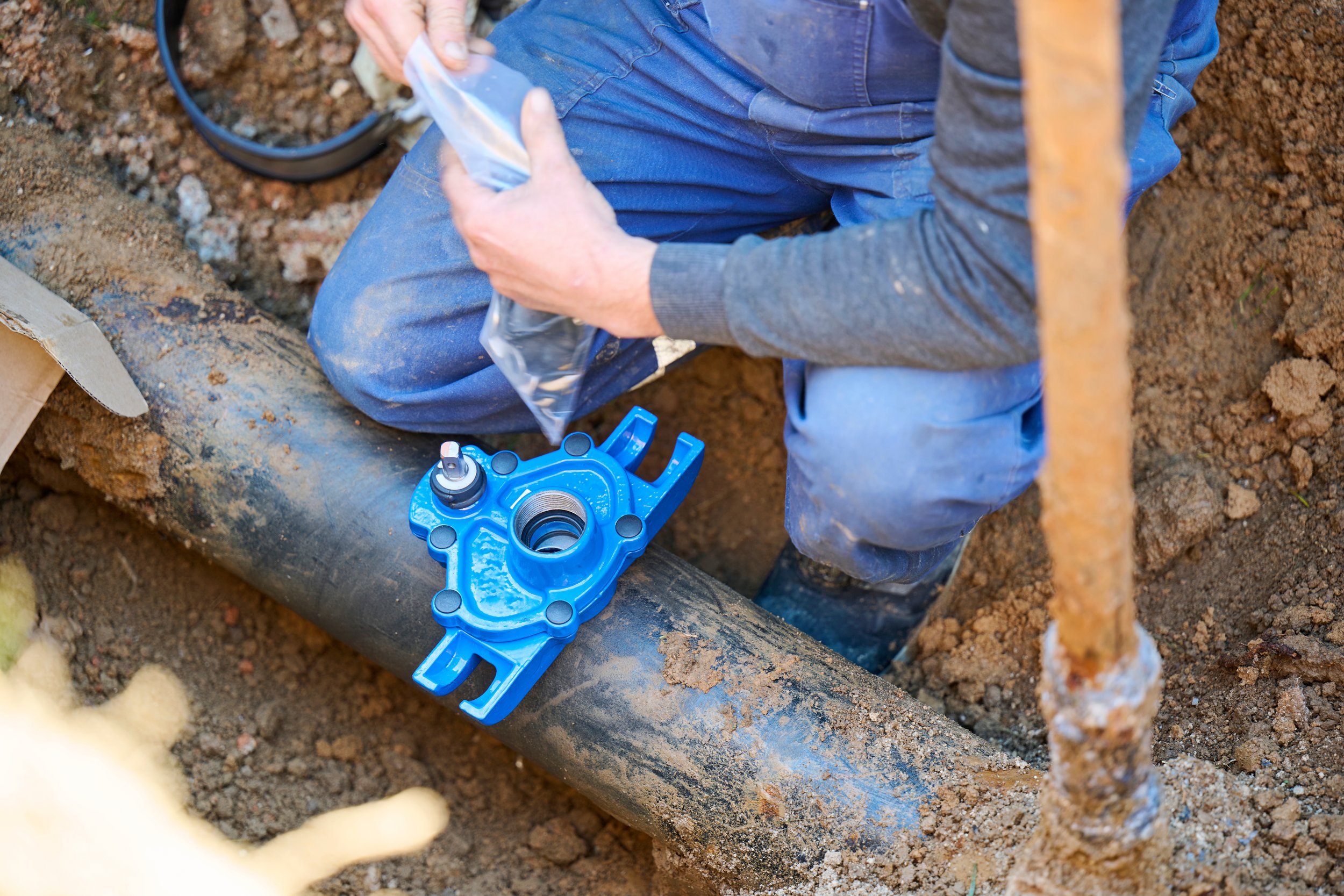What are the types of sewer material found in Arizona and what are the benefits and drawbacks?
Acrylonitrile-Butadiene-Styrene (ABS) - ABS appears black in color. The material is made of plastic construction. The pipe has smooth interiors for an excellent carrying capacity of solid waste matter. The smooth exteriors also help resist (but not entirely prevent) root anchorage. The use of ABS piping began in the 1970s and remains a common drain plumbing material.
Poly Vinyl Chloride (PVC) - PVC material appears white, light blue, or purple in color. The material is made of plastic construction. The pipe has smooth interiors for an excellent carrying capacity of solid waste matter. The smooth exteriors also help resist (but not entirely prevent) root anchorage. The use of PVC piping began in the 1980s and remains a common drain plumbing material.
Cast Iron - Cast Iron material appears black or rust in color. Cast iron used to be a common piping material for drainage systems (pre-1965), and it can still be found in many homes today. Cast iron is extremely strong, durable and heavy. Cast iron also reduces sound and is heat-resistant.
Despite the advantages of strength and durability, though, a big disadvantage of cast iron is that it is susceptible to rust and erosion over time. This can create uneven or jagged surfaces leaving the pipes susceptible to potential blockages.
Galvanized - Galvanized material appears silver or rust in color. Galvanized pipe is a steel pipe coated with pure zinc to prevent corrosion and rusting commonly used in pre-1965 homes. But over time that coating wears off as it constantly comes in contact with the minerals in the water. This then leaves the pipes susceptible to rust buildup and pitting which could end up creating blockages.
Clay - Clay pipes appear dark orange or grayish in color. The first use of clay pipes for sewers was found in 4000 B.C. History has shown that clay pipes can be a very effective material for pipes. While the material’s surface remains smooth, clay pipes are susceptible to breaking, root intrusion or misalignment due to shifting in the ground.
Concrete - Concrete appears grey in color. Concrete pipes are typically found in homes pre-1950. The material is strong, however, it is porous and therefore susceptible to root intrusion. Additionally, as the material ages and erosion occurs, the aggregate (stones) becomes visible creating a rougher surface. This may increase the possibility of a collection of debris.
Orangeburg - Orangeburg appears black in color. The material is a fiber conduit pipe, that was manufactured from wood fibers bound with a special water-resistant adhesive, and then impregnated with liquefied coal tar pitch.
Orangeburg was favored by many plumbers of the time because it was lightweight to carry and easy to use. Use of this material began in 1867 and usage stopped around 1970. Typical estimations of lifespan are approximately 50 years and due to construction techniques, the material is often found in disrepair.
What type of sewer material does your home have? If you don’t know and want to find out, schedule a sewer scope today! 480-867-4599


